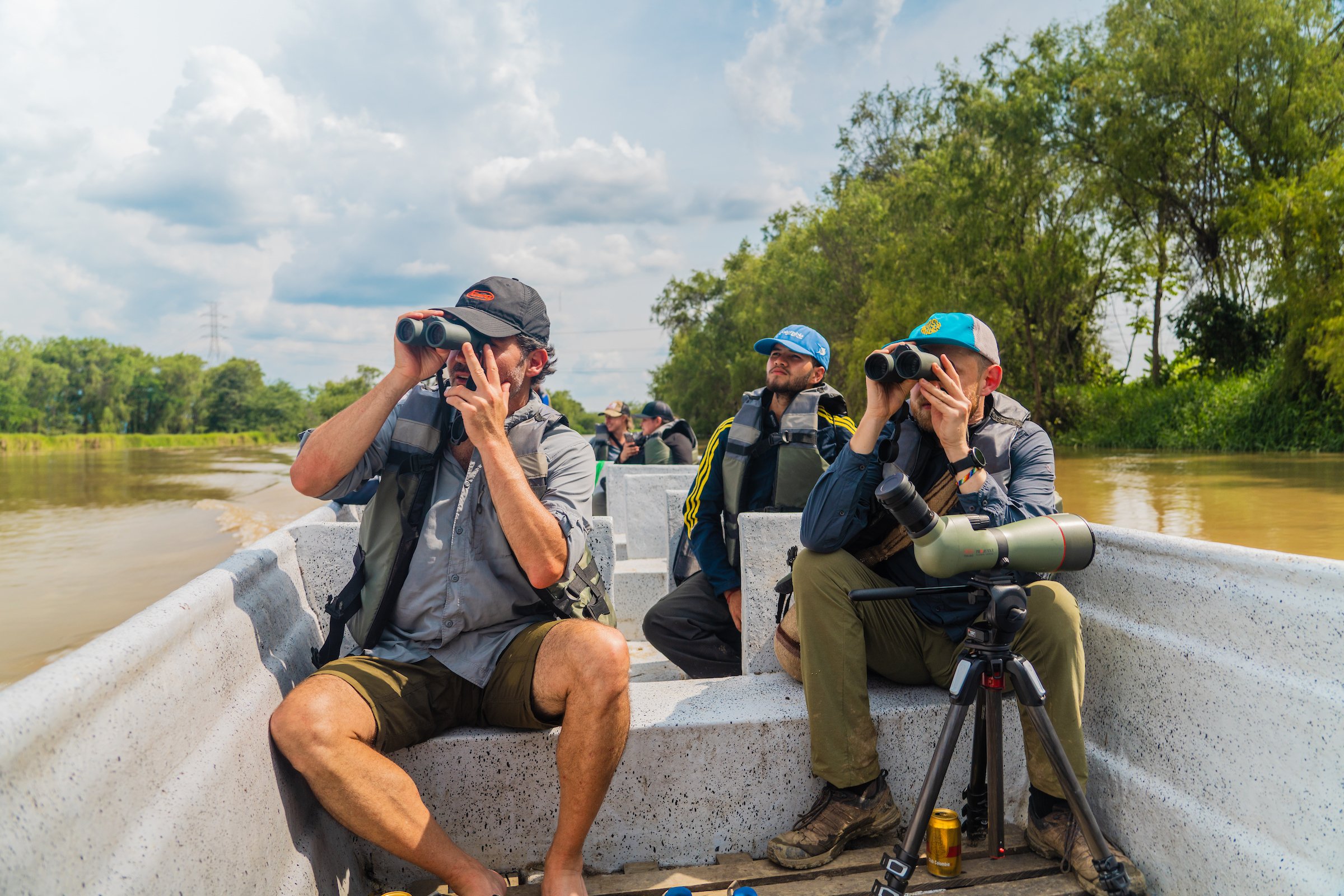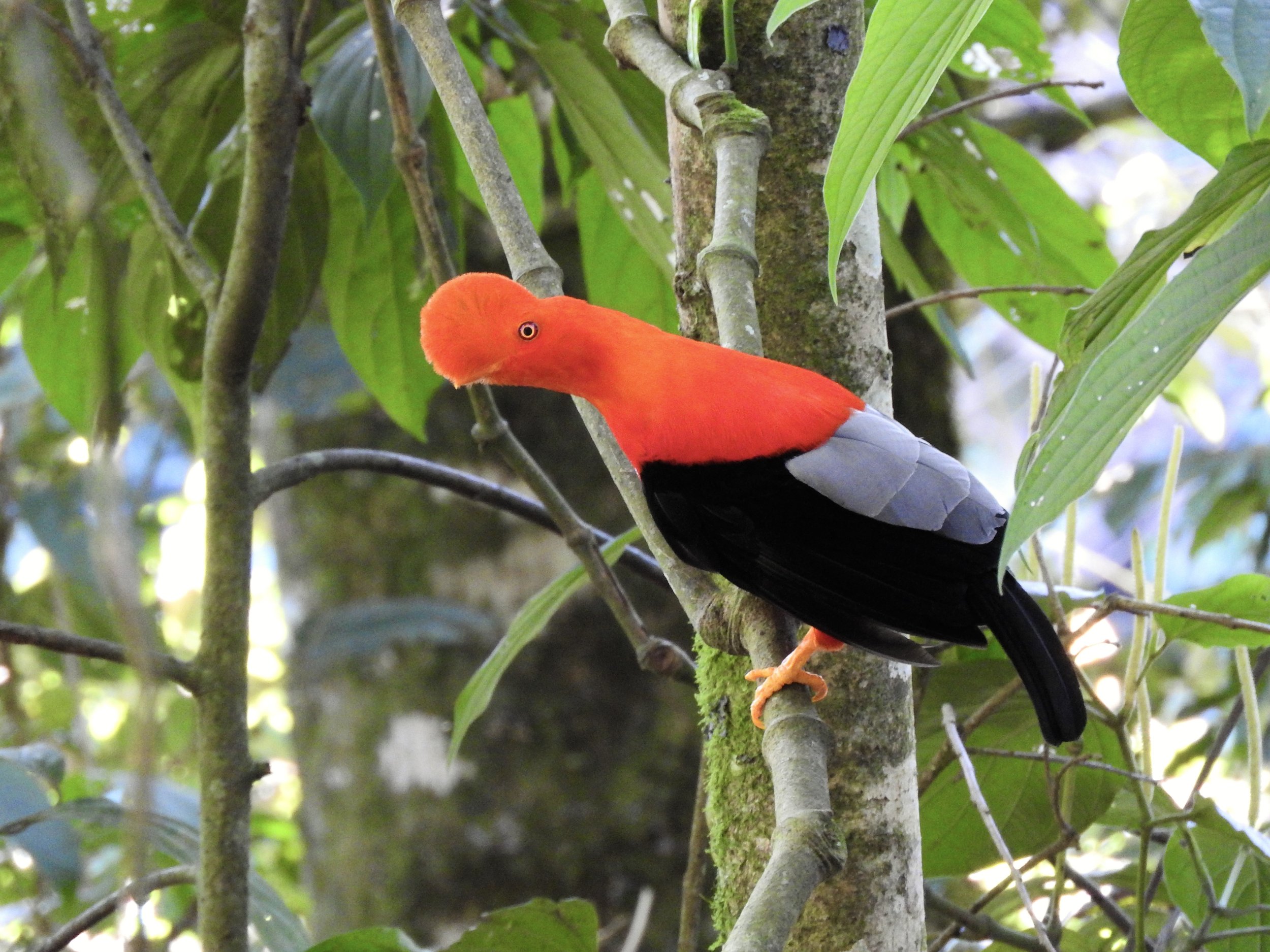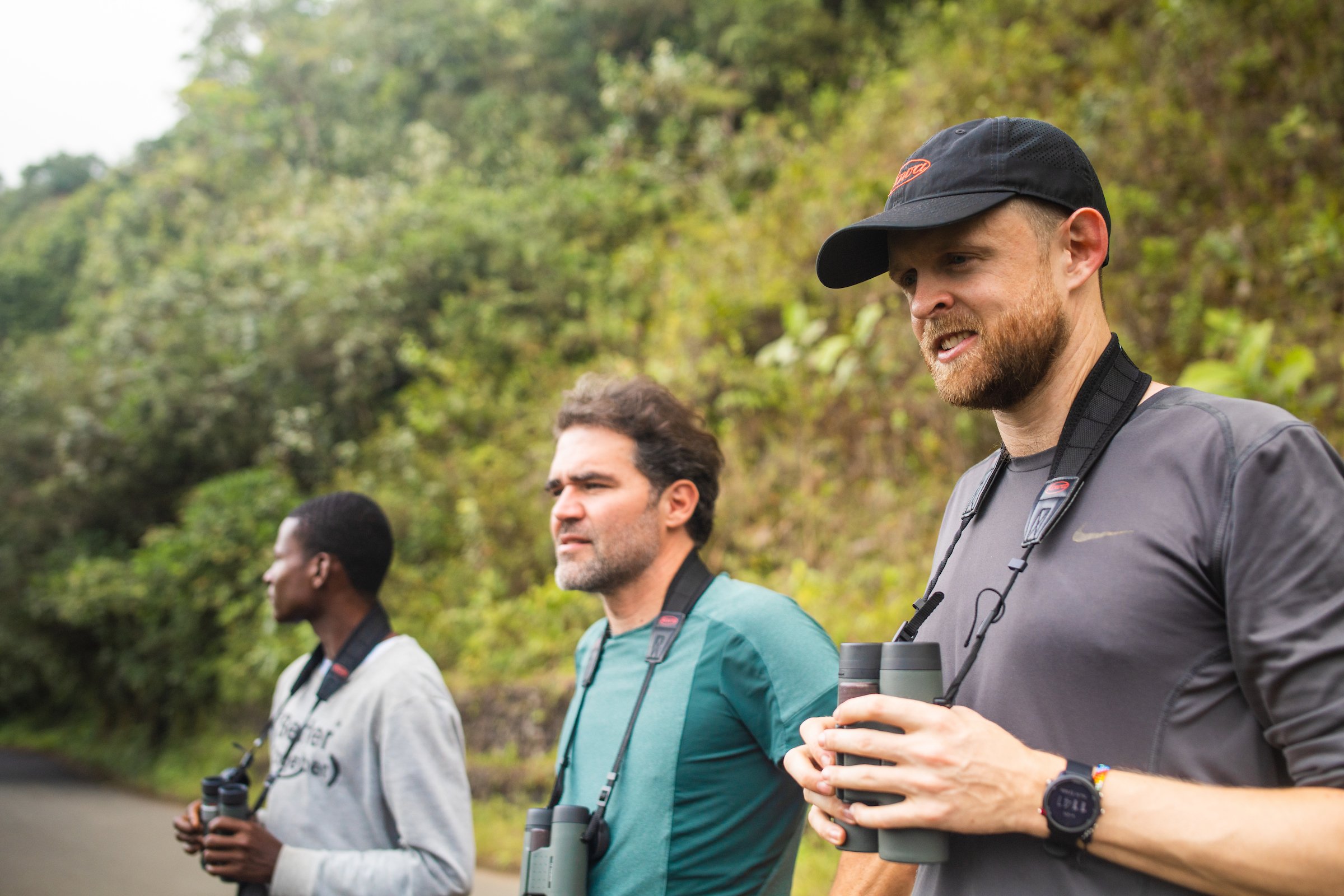My Top 10 Birds of 2021: Part 2
Does the Three-wattled Bellbird take the No. 1 spot? Read on to find out…
Continuing on from Part 1 of my Top 10 birds of 2021, here’s Part 2. Which bird will come out on top? Read on to find out.
5. Townsend's Warbler
In September, I was in New York for a couple of days. I stayed in Brooklyn and went out birding with Birders Show Episode 1 guest George Armistead and his Brooklyn birding buddy, Doug Gochfeld. George had come down from Philadelphia, and the plan was for Doug to show us around his favorite Brooklyn birding spots, pick up some rare migrants, and get me a bunch of lifers (I hadn't properly birded in the US before). So they picked me up before dawn, and off we went.
The morning's birding was mostly coastal, as we explored Floyd Bennett Field and Plumb Beach in rainy and gusty conditions, not ideal for birding. We got some nice birds, but when we moved on to Greenwood Cemetery at mid-morning, things took off. Migrant activity was good, and the rain had eased up. Then, suddenly, as we were enjoying a warbler feeding flock working its way through the lower level of a pine tree, George said, "Black-throated Green Warbler?" in a tone that was more questioning than confident. George and Doug saw the bird and started to wonder whether it was a Townsend's Warbler, a West coast species that was a major NYC rarity.
The Brooklyn Townsend’s Warbler (Photo: George Armistead)
Eventually, after pursuing the flock for a while, the little bird gave us good views, confirming what they'd both suspected: Townsend's Warbler, a bonafide mega bird for the city. It was only the fifth ever record in metropolitan New York! Doug shared the news and sparked a bit of a twitch - at least half a dozen breathless birders arrived in the first half-hour alone.
Pretty soon, we had to move on: I had a flight to catch, and we wanted to grab pizza at Doug's favorite Brooklyn spot, Luigi's (highly recommended, by the way!). Maybe as a non-US birder, the find's significance was a bit lost on me at the time, but the rarity buzz, shared with friends and pizza in a new city is easily enough for this lost warbler to make it onto the Top 10 list for 2021.
4. Cundinamarca Antpitta
This extremely range-restricted antpitta is known from only a tiny corner of the Colombian departments of Cundinamarca and Meta. It’s so elusive and little-known that it was only discovered in 1989 by the man who gave his surname to its scientific name, Peter Kaestner (Grallaria kaestneri). Within its small range, it’s heard quite regularly, but seeing one is another matter. Like most antpittas, it’s a real skulker and extremely shy and retiring.
I’d been hearing about a possible feeding station for Cundinamarca Antpitta for most of 2021. Those whispers became a reality around October when I started to see the first photos appearing on social media. This almost impossibly elusive bird was coming to feed on worms at a small house a few hours from Bogota. I contacted a couple of friends, and we made plans to visit the following weekend.
The feeding station is located at a place called Sendero La Herreria. It’s operated by Luis Ariel, his wife Nubia, and their children, Yersson and Shaira. Luis Ariel has dedicated months of time and effort to getting the antpittas to come in for worms, while his son Yersson is learning to guide visiting birders on the forest trails around the house. Nubia prepares excellent meals, and six-year-old Shaira regales everyone who visits with bird stories, complete with scientific names. She’s a future birding star for sure!
After a good morning of birding the trails (including my lifer Ochre-breasted Brushfinch), we settled into the small hide overlooking the feeding station and began to wait. We waited and waited, and after 45 minutes, there was still no sign of the antpitta. After all that, would it show?
Eventually, there was a slight movement in the undergrowth, and out popped a Cundinamarca Antpitta! As you can see from the photos, it’s hardly a showy or colorful bird, but its story, scarcity, and shyness combined to make this one of my top birds of the year. And the wonderful and welcoming family running the site clinched its spot.
Cundinamarca Antpitta visiting a feeding station at Sendero La Herreria near Bogota
3. Unspotted Saw-whet Owl
Sometimes birds are cool because they're rare and hard to see, and sometimes it's more about the experience you have seeing them. And sometimes, it's both. My Unspotted Saw-whet Owl sighting undoubtedly falls into both categories.
This tiny, adorable owl is extremely poorly-understood and rare in its range from southern Mexico into northern Panama. Yet, there may not be two people on earth who understand this little owl better than Ernesto M. Carman and Paz A. Irola. Their Unspotted Saw-whet Owl Project has been running since 2010, and the project was formally formed in 2014. They've engaged in a continuous search for these owls during that time and learned a considerable amount about their habitat, lifecycle, and reproductive habits. The depth of their knowledge and passion for this species is genuinely astounding and commendable.
So it was with great pleasure that I joined Ernesto and Paz on one of their regular monitoring trips around the upper slopes of Irazú Volcano in search of Unspotted Saw-whet Owls. Conditions were sub-optimal, to say the least: the night was windy, misty, and cold. But, undeterred, we set off down from the road to the forest edges. After drawing a blank in two known territories, we gamely carried on down the edge of a ravine to check out a third.
That's when we struck gold: an Unspotted Saw-whet Owl calling faintly in the distance. Ernesto gently whistled in reply, and the bird came closer. Ever mindful of the owl's wellbeing, Ernesto instructed us to get ready: he would illuminate the little bird for no more than a minute.
And what a minute it was: the owl seemed impossibly tiny as it stared back at us with its big, golden eyes. It sat there, calling its tooting song, while our group enjoyed terrific views of one of the rarest owls in the Americas.
The owl itself would have been enough of a star bird to make the Top 10, but the privilege of being able to see it and learn about its habits and the threats it faces from Ernesto and Paz made the experience extra special and memorable. Plus, Ernesto helped us get Cabanis's Ground-Sparrow the next day. But that's another story for another blog.
My memorable sighting of the Unspotted Saw-whet Owl (Photo: Diego Quesada)
2. Three-wattled Bellbird
I didn't work harder for a bird in 2021 than for the Three-wattled Bellbird! The Birders Show team was on our first international shoot in Bocas del Toro, Panama and one of our big targets was to film this spectacular species. And on a personal level, I wanted to get a good look at my namesake bird. Our hosts at Tranquilo Bay Ecolodge assured us that there was a strong chance, as the birds would be on the island as part of their annual altitudinal migration from the nearby highlands.
By our final day of filming, we'd drawn a blank on the bellbirds. Not so much as a call from the dense jungle surrounding the lodge. Finally, we heard the distinctive 'bonking' call echoing out in the distance. We set off in the general direction of the call, only to find that it was coming from a thick, pathless section of forest. Bushwhacking it was! For the next two hours, we circled in on the birds; each time it seemed like we'd found them calling overhead, it was impossible to get a viewing window, and they'd move further on.
Finally, my co-host Diego beckoned me over and pointed to his scope - a breathtaking male Three-wattled Bellbird, preening and calling to his heart's content. We sat and watched him for at least half an hour, enjoying privileged views of one of Central America's most sought-after species. And it only cost me about two dozen thorn scratches. A good deal if you ask me.
Check out our bellbird adventure in Episode 11 of The Birders Show below:
The Three-wattled Bellbird would normally have been a runaway No. 1 were it not for…
1. Resplendent Quetzal
The Resplendent Quetzal is one of those species that birders across the world dream about seeing. It may not be the rarest bird out there, but it's undoubtedly one of the most visually stunning. That electric combination of bright-red and glistening green; the faintly golden-tinged mohawk crest; and those elegant tail streamers waving in the slightest breeze. The Resplendent Quetzal is one of those birds that you see in a book when you're a child and say, "I have to see that bird one day."
Happily for me, that day finally came in later November 2021. I traveled to Costa Rica thanks to an invitation from the ICT (Instituto Costarricense de Turismo). I had a day to spare before the trip started, so I arranged to visit Paraiso Quetzal Lodge, a couple of hours south of San José. I got there late at night, ready to join my guide at first light to search for one of my all-time dream birds.
It turned out to be less of a search and more of a visit: the lodge works with local farmers to protect quetzal habitat. The farmers protect the quetzal's habitat and, in turn, phone in sightings so that guests can see the birds up close. My guide Erick got such a call, and off we went to get my quetzal.
We pulled up in the car, the farmer gestured to a nearby tree, and there he was! A jaw-droppingly beautiful male quetzal, feeding without a care in the world. I was genuinely speechless for a few minutes while I watched him feeding, just meters away from me.
It may have taken a fraction of the work of the bellbird, but how could I not reserve the No. 1 spot for a bird that I've dreamed of seeing for more than 20 years. So there it is: my top bird of 2021, the Resplendent Quetzal.
What a bird! My first-ever Resplendent Quetzal at Paraiso Quetzal Lodge in Costa Rica











